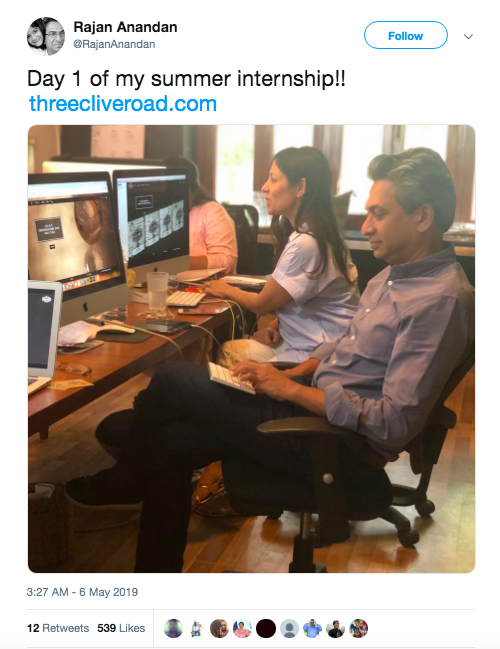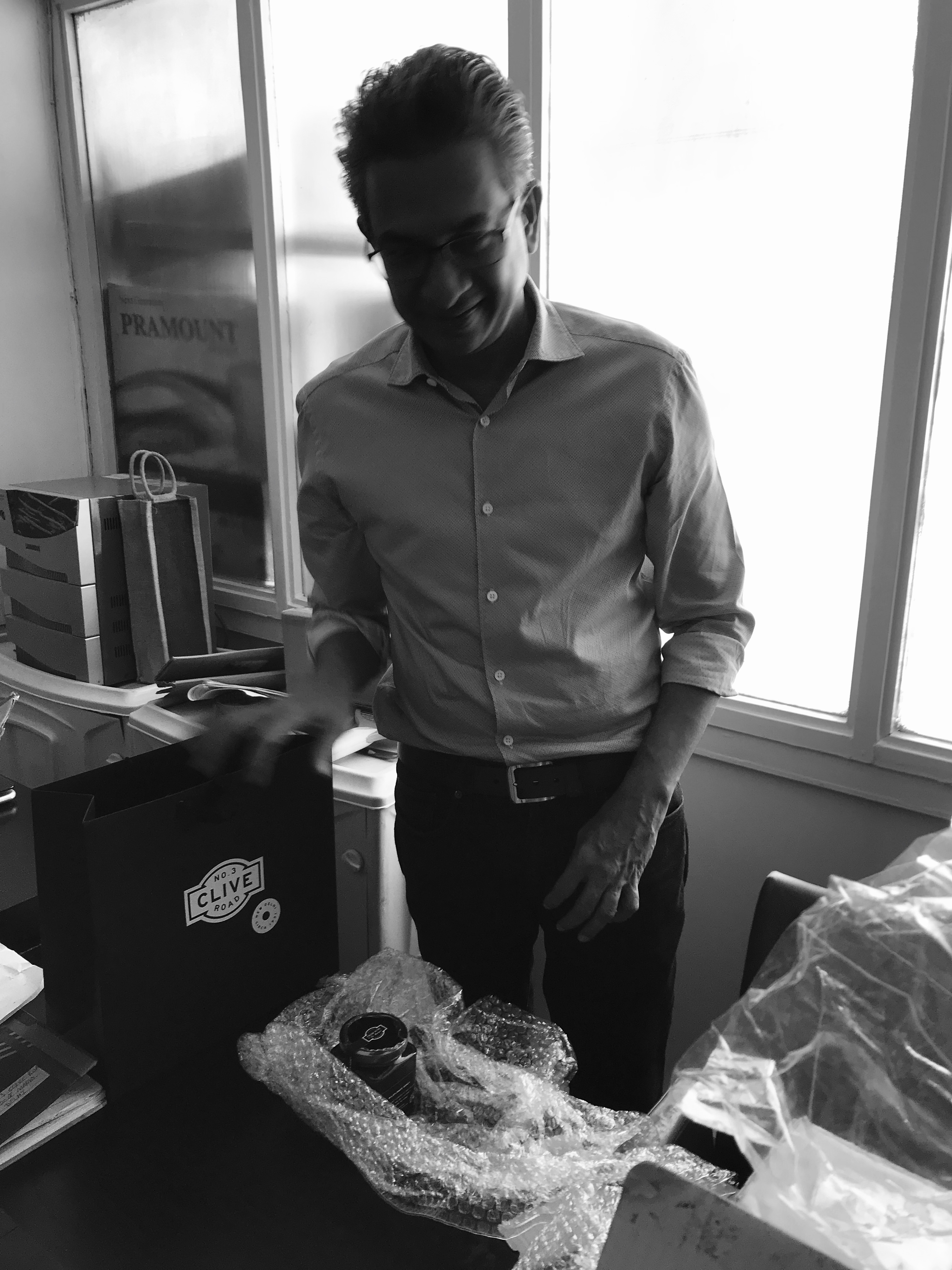RAJAN ANANDAN

IN CONVERSATION WITH RAJAN ANANDAN

MD SEQUOIA CAPITAL / XOOGLER / SUMMER INTERN @THREECLIVEROAD
Rajan Anandan on building a luxury brand in India, the future of startups and his experience as an intern @threecliveroad.

Summer is long gone, but we hear you had a pretty interesting break and we’d love to hear all about your experience as a summer intern at @threecliveroad.
It was an extremely interesting, unique and exciting experience at @threecliveroad. I spent the last fifteen years running and leading large tech businesses and investing in very early-stage tech companies. This was definitely a very different experience, a luxury lifestyle brand in a non-tech space with a very small startup team. Many of the assumptions I came in with – in terms of how a startup should be built – ended up being not very relevant to @threecliveroad. At the same time, I learnt a lot about a non-tech company trying to build a high-end brand in India.
“Many of the assumptions I came in with – in terms of how a startup should be built, ended up being not very relevant to @threecliveroad.”


Let’s get right to it. With all your experience with startups, what is your advice to Indian homegrown brands?
The most important thing is to deeply understand what you want your brand to stand for. The incredible thing about @threecliveroad is that it has a very strong brand identity – in terms of what it stands for, in terms of the target audience and being able to define that very clearly. What is the brand ethos? What is the brand essence? These things are very important. Too many brands try to be everything to everybody.
Second, for small brands, you have to build out a team that has the requisite skills to scale in the way that it should be scaled – again, I think the key thing here is how do you maintain the essence of the brand while you’re scaling? It’s very easy to scale and in a few years, lose what the brand stands for.
Third, being thoughtful about which channels to expand in. If you’re a consumer products brand, like in the case of @threecliveroad you can be in hotels, you can be offline retail, you can be in grocery, you can be online, you can be local, you can be global. Making design choices for what channels you want to be in and in what sequence becomes very important.
The most important thing remains, be clear on what you are and what you’re not as a brand and then, of course, try to build a strategy around that.
“Too many brands try to be everything to everybody.”

You mentioned a luxury brand having a set target audience to begin with, how do you then overcome the fear of expanding that target set?
Therein lies the magic – if you have a specific user group/consumer group, try to get much deeper penetration within that audience. Then focus on other potential consumer audiences, it could be an age group, demographic, income group, even a country. It’s really about thinking through adjacent groups that might value this product. The more premium your brand is, the clearer your luxury positioning is. It’s very important not to grow too fast. In fact, that was one of my biggest learnings, growing fast and furiously is not the right strategy if you end up losing the essence of the brand.
“The most important thing remains, be clear on what you are and what you’re not as a brand and then of course- try to build a strategy around that.”


After you’ve been on the brand-building side rather than the investing side, what was your biggest learning?
Well, I have been on the brand-building side…Google India is a brand 
Understand what your brand stands for. And then try to build on that and not sway too far from that core essence. In many ways, if you’re building a company, you need to have a set of users that are raving fans of your product/service. If you don’t have this, it’s actually a sign that you don’t have product-market fit.
In tech companies, you have a product-market fit when it’s very clear that users/consumers love your product.
With @threecliveroad, the team was very clear on who that was!
“If you’re building a company — you need to have a set of users that are raving fans of your product/service.”
“How do you maintain the essence of the brand while you’re scaling?”


In general, what does the future look like for Indian start-ups focusing on luxury products?
I think before we talk about luxury products, the time to build consumer product brands in India is NOW.
Due to a combination of things – a growing millennial population with disposable income, the rapid growth of online distribution channels, supply chains being commoditized leading to things being very very fast, and finally capital being available for consumer products. The Direct To Consumer brands is the new big wave that’s started in India – so it’s a great time to be building consumer brands in the country.
The reason it’s tougher building a luxury brand is that the luxury market in India is still very small. Of course, 10 years from now it’ll be much larger. 50 times larger. Every year the number of people that can afford luxury is going up by a significant amount. It’s easier to build a luxury brand if you’re in a large luxury market, but there’s no reason why it can’t be done. I do think over the next decade, many Indian brands will build large businesses globally in different luxury spaces. But I would say, building a mass brand in India today is much easier than building a luxury brand, only because the number of people that can afford to buy luxury products is still quite limited.
When you talk about luxury, and especially building a luxury brand at a global scale, I think those are going to be tough. Against all odds, @threecliveroad is already on its path!
“The time to build consumer product brands in India is NOW.”
Rajan recommends a book, a podcast, and a blend.
Masters of Scale by Reid Hoffman — Podcast
Peace Is Every Breath by Thich Nhat Hanh — Book
Using the No. 3 Clive Road classics for cold brewing — Blend
“Growing fast and furiously is not the right strategy if you end up losing the essence of the brand.”
“Over the next decade, many Indian brands will build large businesses globally in different luxury spaces.”

